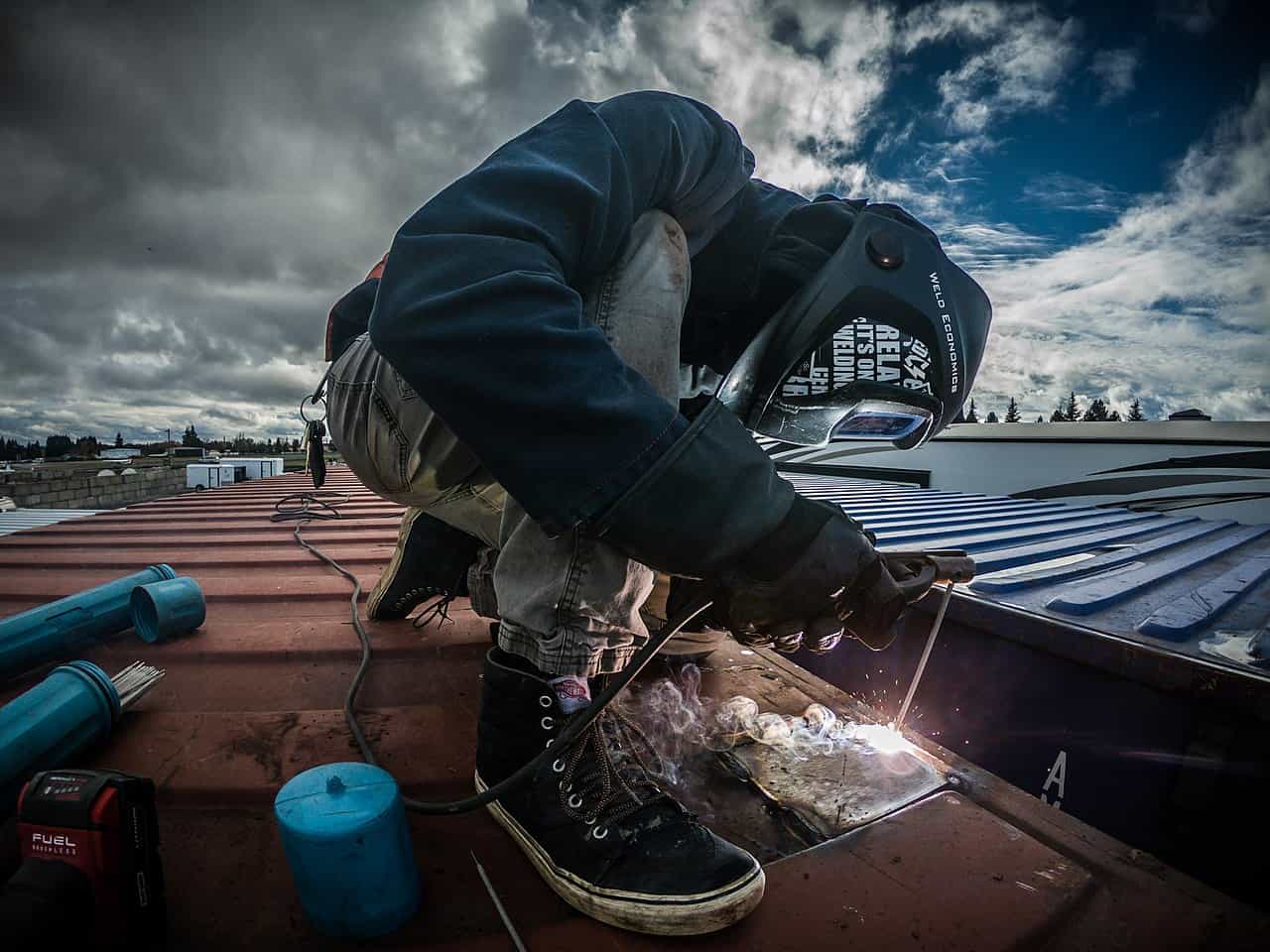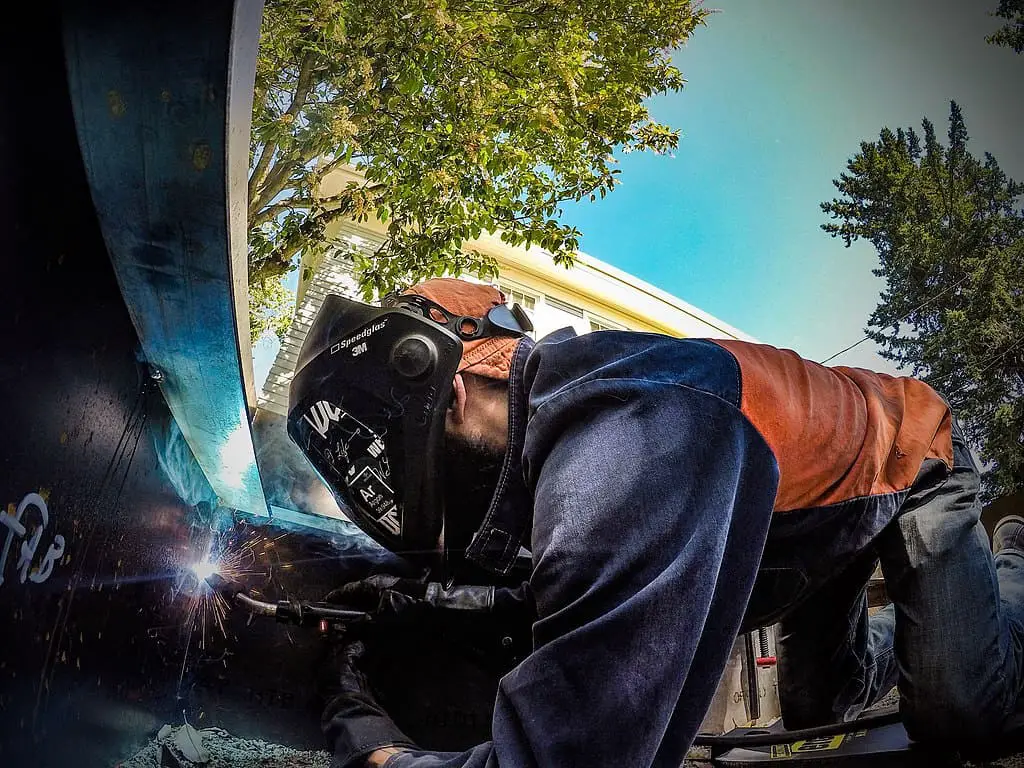As a new or professional welder, it sometimes gets tricky while choosing the strongest between two welding techniques. It happens because all of them have at least some sort of technical differences from the other.
Stick welding is slightly stronger and better because of its ability to carry out substantial welding projects. Stick can also penetrate more than MIG welding. But the fact is this is not as straightforward as you think.
Besides, choosing the appropriate one will mostly depend upon the project material so as to get the highest performance.
Consequently, we have adopted this exclusive guide to walk you through all the crucial factors and info about Stick and MIG welding that will ultimately conclude which one is the best or strongest.
So let’s begin:
What is Stick Welding?
Stick welding is also known as Shielded Metal Arc Welding which is one of the most common and frequently implemented welding techniques in the welding industry. The integral process works by supplying an electric current through a consumable metallic electrode and subsequently producing an electric arc to melt the workpiece and consequently form the joint.
The electrode also consists of a flux coating that continuously produces vapor which works as the shielding gas to protect the whole process from metal and atmospheric contamination. Besides, the flux coating then turns into a slag layer which works as a second protective layer against contamination.

Now, this process is quite versatile due to its simplicity and flexibility. It is often used to join materials made of stainless steel, steel, and iron. However, aluminum, cast iron, alloy steel, and nickel made materials are also frequently used in this process.
What is MIG Welding?
MIG welding is also known as Gas Metal Arc Welding which is another common welding process whereas the term MIG denotes to metal inert gas. This process is basically performed by continuously feeding a consumable electrode inside the weld pool in which a continuous direct current passes through the electrode from a welding power supply.
Besides, the crucial part of MIG welding is the gas nozzle which basically surrounds the whole electrode wire and works as a shielding gas to protect the work from atmospheric contamination.

Now, as the electric arc forms underneath the electrode, it subsequently melts the workpiece and electrode together which consequently forms in a strong fusion to complete the weld.
Unlike Stick welding, MIG welding is generally performed over four types of material. They are aluminum, steel, nickel alloys, and copper.
Now, let’s move on to all the circumstances where it will be appropriate for you to choose between Stick and MIG welding.
When to use MIG vs Stick welding?
MIG welding uses
As you can see, MIG welding generally requires gas to carry out the task. Besides, the various types of material that can be easily welded by this process make it flexible and convenient to use. We can perform all sorts of household works and mid-range projects by using MIG welding.
On top of that, materials that are usually thicker in size and width can be also welded by this process. A rough estimate can be to use a 24 minimum gauge steel to higher 0.5-inch steel.
Besides, as MIG welders usually require a maximum 115 volts of electricity to operate, a 110- volt plug is enough to adequately supply the current.
By considering these factors, it is very simple to assure that MIG welding can be efficiently performed over industries and projects like automobiles, piping, making trailers and fences, etc.
Stick welding uses
Stick welding doesn’t require any gas nozzle while forming the arc which makes it appropriate and flexible to perform over large projects which includes way substantial size materials than that of MIG welding. Besides, the fact of simply providing the electrode with a flux coating is enough to prevent any contamination.
Although Stick welding requires only a handful number of instruments to perform which denotes to less costing than MIG, it is undoubtedly ideal for performing over projects like bridge construction, industrial factories along with manufacturing oil pipelines for huge transit.
Now, let’s move onto the ultimate part which will compare each of these two welding techniques side-by-side to find out which one is the strongest.
Additional Read: Best 110V Stick Welders
MIG vs Stick: Which One Is Stronger?
If you closely examine all the provided info about these two welding techniques you may, however, conclude Stick welding is slightly better and more powerful than MIG welding because of its ability to carry out substantial welding projects. But the fact is this is not as straightforward as you think.
MIG welding can still be powerful if the welder is efficient & experienced and draws enough attention to the key and precautious factors throughout the welding task.
But the crucial fact is, the term strongest denotes to which one of these two techniques features the deepest penetration. Well, MIG welding was originally designed to provide less penetration which works best on metals like sheet while conversely Stick welding features way more deep penetration than that of MIG welding and tend to work perfectly on metals that are way thicker in size and width.
Another comparing factor is the use of DC power. MIG welding tends to use DC reverse power which means the electrons direct more or near 70% into the filler metal resulting higher melt off. On the other hand, stick welding primarily depends on DC straight power. Hence, more than 70% heat direct towards the workpiece which results in deeper penetration.
Finally, in terms of quality both of them can be a perfect choice if executed properly and if you are planning to weld thinner metal like steel, aluminum, copper or alloy with a quality finish, MIG welding can conveniently do the task.
On the other hand, if the metal seems to be thicker in size and made of stainless steel, iron, steel, nickel or even aluminum which require deeper penetration, Stick welding is the way to go.
Final words
Thanks for reading the whole post. We believe now you can conveniently determine which process would be more feasible for you while being aware of the peak performance of each of these two welding techniques while dealing with a variety of materials. Stay along with us for our upcoming welding related guides and articles. We appreciate your support.
